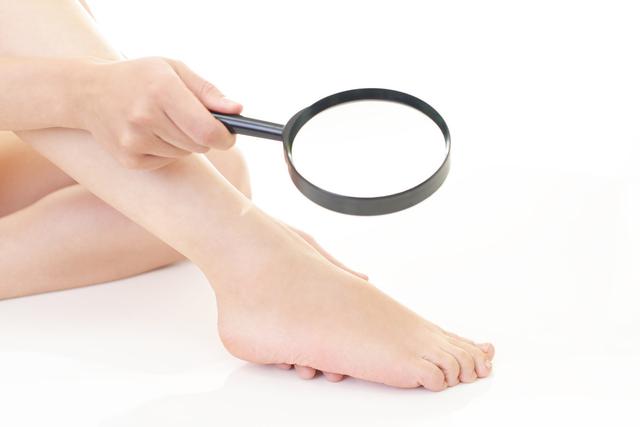What can I do about diabetic peripheral neuropathy right foot pain?
The incidence of diabetic neuropathy is about 60-90%, and the incidence of diabetic neuropathy is likely to increase with the duration of diabetes, so that it may be that all diabetic patients may develop peripheral neuropathy.
Diabetic peripheral neuropathy is a kind of diabetic microvascular complication, and the pathogenesis is not very clear at present. It is considered that long-term high blood glucose affects the nerve microvessels, leading to a decrease in blood supply to the nerves and an increase in blood viscosity, and finally metabolic disorders in the body and microcirculation disorders, resulting in ischemia and hypoxia of the peripheral nerves.
Clinical manifestations vary, depending on the nerves injured, and may show signs of sensory, motor, and autonomic nerve damage.
Among them, if the injury is to the sensory nerves, then pain, numbness, sensory hypersensitivity, hyperalgesia and other symptoms can occur, with limb pain being the most common and more pronounced at night.
The condition of pain in the lower extremities is known as painful neuropathy, but there is no gold standard for the diagnosis of neuropathy. A diagnosis of diabetic neuropathy is usually made after the diagnosis of diabetes has been made clear and other causes of the condition have been ruled out.
Peripheral neuropathy is usually nerve damage at the end of the limb, and is usually symmetrical, meaning that symptoms on both sides of the foot occur at the same time. If unilateral pain is evident , it is important to rule out causes such as gout, osteoarthritis, sprains, and so on. Uric acid test, joint ultrasound and other tests should be carried out to clarify. Because diabetic patients may also be combined with other diseases.
Painful neuropathy in diabetes can be diagnosed if the diabetic patient has poor long-term glycemic control and may have numbness, abnormal sensation, and pain in the lower extremities afterward.
The diagnosis of diabetic painful neuropathy is clear, the first step is to carry out a smooth control of blood glucose. Smoking, alcohol, and vitamin deficiencies can cause neuralgia, so for patients with pain in the lower limbs, quitting smoking and alcohol and supplementing with B vitamins are very important basic treatments.
Medications such as gabapentin, pregabalin, and duloxetine may improve diabetic neuropathic pain, and if the pain is aggravated by nervousness, sedative medications and anti-anxiety medications may be considered and may also be effective.
Foot protection is essential when neuropathy, especially painful neuropathy, is present. Be sure to have regular checkups to prevent events such as skin breakdown and infection.
I'm Dr. Sun, pay attention to Dr. Sun talk about sugar, continue to learn more quality health knowledge, help please like, have questions please leave a message, will reply!
Hello, my friend.
In fact, I really hear too many questions like these. It means that you're already having complications, and you're all focusing on the complications and not really getting to the root of diabetes, so to speak! I don't know which end is light and which end is heavy!
The point is what if I give you the word? You wouldn't necessarily listen to me. So I really don't care to talk about these issues, I can give you the pathogenesis of diabetes, thoroughly understand, and can tell you how to regulate? The key is do you believe? The main thing here is to talk about type 2 diabetes ah, in fact, the vast majority of people now are type 2 diabetes.
If you're really responsible for your body, I answered earlier there's a question about diabetes that goes over thoroughly how the three more and one less formation of diabetes works, so you can go back and look for it. If able to listen to understand. Lao Wang, I wish you good health and have something to say.
More than half of all diabetic foot patients have either mild or severe peripheral neuropathy. Why is neuropathy one of the leading causes of diabetic foot? It is because it is characterized by the following:
First, having peripheral neuropathy can result in diminished or even absent pain sensation. What does it mean? Let's say you stick something in your foot and cut it, and you don't feel any pain, you can't notice the wound, and often by the time you do notice it an infection has developed.
Secondly, it will cause the temperature sensation to decrease or even disappear. Especially elderly patients, various reasons often cause lower limb pain, numbness, weakness, etc., people would like to relieve relief by soaking their feet.
For example, you use especially hot water to wash your feet and soak your feet, soak your feet when you will not feel how high the temperature is, or even already quite high, you still can not feel, so easy to burn. There is also the use of hot water bags, hand warmers, etc., can burn feet caused by diabetic foot.
Thirdly, peripheral neuropathy can also cause sensory abnormalities in the peripheral circulation of the hands and feet, sometimes there will be some scratching, pain, burning sensation ants, etc., it will be unconscious, to scratch with the hands, easy to scratch, can also cause wounds, the formation of sugar feet.
Fourth, there are also patients whose neuropathy is caused by vascular lesions. After the formation of a wound, the wound will not heal for a long time because it does not receive sufficient blood, medication and nutrient supply, and will eventually become infected and develop into a diabetic foot.
So, diabetic peripheral neuropathy is still quite dangerous and implies a great potential risk. However, there is a situation where diabetic peripheral neuropathy is not easy to distinguish from symptoms caused by other problems, making it difficult to diagnose, and most tend to be discovered only when a diabetic foot ulcer develops. Therefore, it is important for everyone to be screened regularly.
It is generally recommended that patients who are old, have a long history of the disease, or have large fluctuations in blood sugar should be screened every six months, while other patients can be screened once a year. Once peripheral neuropathy is detected, it is important to receive treatment under the guidance of a medical professional to avoid avoidable harm to the patient due to untreated or improper treatment.
[These 4 kinds of functional tea, on the regulation of blood sugar, blood pressure, blood fat is good, diabetic patients should be how to choose]
1.Hawthorn tea regular consumption of hawthorn can expand blood vessels, assist in lowering blood sugar, lowering blood pressure, preventing and controlling cardiovascular disease and senile heart disease. Hawthorn contains flavonoids and vitamin C, carotene and other substances can block and reduce the generation of free radicals, can enhance the body's immunity, delay aging, but also can activate blood circulation and remove blood stasis.
2. cassia seed tea drinking cassia seed tea can clear the liver and eyesight, prevent blurred vision, lower blood pressure, lower blood lipids, reduce cholesterol, etc., for the prevention and treatment of coronary heart disease, hypertension effective. Because of the laxative effect, for constipated sugar lovers more suitable.
3. Buckwheat tea has the expansion of arterial blood vessels, soften blood vessels, reduce blood lipids, cardiovascular disease and hypertension have a good preventive, therapeutic effect. Regular drinking can improve insulin sensitivity, smooth blood sugar.
4. Mulberry Leaf Tea Mulberry leaves contain an alkaloid that can delay the absorption of glucose. It also stimulates insulin secretion and reduces the rate of insulin breakdown, which can be used to prevent and treat diabetes.



What to do about diabetic peripheral neuropathy right foot pain? Be wary of diabetic foot and gout. Diabetic foot is a complication foot disease that occurs in diabetic patients, itself due to diabetic patients with lower limb ischemia or lower limb neuropathy caused by foot pain, numbness, deformity, ulceration, gangrene, amputation and so on.
After removing shoes and socks and cleaning your feet, carefully observe your feet, feel the temperature of your feet, whether it is cold; put your fingers on the arteries on the back of your feet to feel the pulsation, whether it is weakened or disappeared; observe the color of your feet, whether it is purple and white; besides pain, whether there is any sign of numbness, dullness of perception and so on; and whether there is any deformity in your toes. All of the above phenomena are precursors of diabetic foot and should be actively prevented or improved.
If there is only pain in the right foot, but there are no open lesions in the skin of the foot, i.e., no broken ulcers, etc., then thankfully, it is only a high-risk stage of diseased foot at this time, and can be controlled and reversed. This is done as follows:
1, every day about 37 degrees of hot water foot soak for 10 to 15 minutes, before soaking the feet first hand to try the water temperature, not too hot, to avoid scalding feet. In the process of foot soaking, massage the calf muscles and ankle area with your hands to promote blood circulation in the lower limbs. After the end of the foot soak quickly with a clean, soft, absorbent towel to dry the feet, especially the toe seam dry is very important.
2, soak your feet after the end of sitting on a chair or bed, lower limbs, foot massage care, from the toes to the knee part of the gentle massage for about 15 minutes, to do the parts of the slight heat.
3. Repeat the above massage movements in the morning as well.
4, shoes and socks should not be too tight and crowded, and the mouth of the socks should be loose to avoid affecting the blood circulation of the lower limbs.
5. Trim your toenails regularly. Toenails do not stay too long, otherwise walking will occur squeeze, causing toe pain. Toenails should not be cut too short, too short the top of the front end of the toes to lose protection, toe muscles pulling toenail joints, but also easy to pain.
6, nothing during the day, upside down toes and heels, can promote blood circulation in the lower limbs. You can also gently pat the lower limbs.
7. If the pain symptoms cannot be relieved, please go to the hospital as soon as possible for medical examination.
If it is the cause of gout, then take a light diet for the near future, do not eat oily and purine-rich foods, and do not drink alcohol or beverages.
The following answer is extracted from Dr. Lu Zhenhe, Chief Physician, Department of Pain, The Second Affiliated Hospital of Guangzhou Medical University, "Diabetic Neuralgia Seeks Specialist's Help" @DrLuToTreatPain
Diabetic peripheral neuralgia treatment can be found in the following, the
Treatment of pain is important; pain stimulates vasoconstriction, blood sugar must rise, and hypoglycemic drugs become ineffective. When the person is not in pain and can sleep, the medication for blood sugar can work better.
Early management of diabetic peripheral neuralgia is critical to slow the progression of symptoms so that numbness in the hands and feet does not rapidly progress to pain or even muscle weakness.
(i) Pharmacological treatment is fundamentalStrict glycemic control is the most fundamental measure in the treatment of pain, together with metabolic regulation, antioxidants, and improvement of microcirculation.
(ii) Opening of the microvascular network
Sympathetic nerves and sensory nerves go to the limbs together, specializing in the contraction and expansion of small blood vessels. If the sympathetic nerves of the diseased limbs can be allowed to rest for more than a month, there will be the formation of collateral circulation, and the microcirculation of the diseased tissues and the neurotrophic nutrition will be improved permanently, which will help the nerves to return to normal. For diabetic neuralgia, the Pain Medicine Department specializes in administering a shot to the sympathetic ganglion responsible for the pain area, which can immediately warm the skin and relieve burning pain or light touch pain. Dr. Lu's pain team has the most advanced MRI-guided puncture system in the country, which allows for fast and precise puncture without radiation, enabling sympathetic radiofrequency treatment.
(iii)Release of nerve entrapment
Peripheral nerve decompression has opened up a new avenue for the treatment of diabetic peripheral neuropathy. first proposed by Prof. Dellon of the Hopkins Institute of Peripheral Neurology in the United States in the 1980's, it is an open surgery targeted at resolving nerve pain in the upper or lower extremities. Although the surgery does not change the metabolic process of diabetes, but the hard, narrow gap around the nerve to expand, when the nerve pain has a positive nerve irritation sign (Tinel's sign), that is, in the location of the nerve walk knocking or touching a certain point, can be induced by the patient limb numbness of the person. For lower extremity dorsal, plantar and toe numbness the common peroneal, deep peroneal and tibial nerves are released, and for upper extremity pain and hand numbness the median nerve, ulnar nerve and sensory branch of the radial nerve are used in an open decompression surgery called peripheral nerve triple nerve decompression surgery, which has a chance of relieving symptoms of at least 80%. It is a common clinical treatment for diabetic peripheral neuropathy in the United States.
Director Lu Zhenhe began in 2003, the application of radiofrequency needle can be close to the nerve, low-temperature pulse current can be loosened around the jammed nerve muscle scars or disc herniation, can quickly increase nerve blood flow and nutrition. The puncture and injection can achieve better analgesic effect than the open surgical release, which has been popularized and clinically verified in the whole country.
(iv)Spinal Cord Electrical Stimulation (SCS) Therapy: When no nerve entrapment point can be found in the periphery and conventional treatment is ineffective. The United States and other widely used in the lumbar spinal canal needle penetration of an electrode wire, connected to a pacemaker pulse current, blocking peripheral nerve epileptic discharge stimulation transmitted to the brain caused by pain, and sympathetic blockade open peripheral blood vessels, effectively improve nerve blood flow and nutrition. Director Lu started to introduce SCS treatment technology in 2003, which helped many people to get long time relief from intractable pain and ulcers and avoided amputation.
(v)Autologous Blood Repair Nerve Treatment: The medical triple oxygen therapeutic instrument of pain department produces triple oxygen local injection with anti-inflammatory, loosening nerves and promoting tissue repair and many other effects, avoiding the side effects of hormone injection on blood sugar. Charged into the infusion bottle, blood transfusion bag, back to the human body, there is to improve blood microcirculation, anti-inflammatory, dissolve plaque, reduce blood lipids, nutrient nerves, can be treated with thrombosis, post-stroke rehabilitation, coronary atherosclerosis, hyperlipidemia, chronic viral hepatitis, neuropathic pain. It can also be extracted from its own venous blood to concentrate platelets to be injected into the damaged tissues to help repair nerves, muscles and cartilage.
(vi) Rehabilitation: It includes physical super laser, pulse, electromagnetic, infrared and other treatments, which can help restore blood flow to local nerves and relieve diabetic peripheral neuralgia to a certain extent. However, the most fundamental is the patient's own initiative of rehabilitation training, including slow walking, gymnastics and so on. When the muscles move and the blood flows, the body's ability to self-regulate and repair will be greatly enhanced.
Experts remind, if diabetic friends hands and feet appear worm crawling sensation, burning sensation, electric shock and other abnormal sensations, or discharge-like pain, you should be alert to diabetic neuralgia. Going to the pain department, you can get the cause-specific treatment of pain, including the release and repair of local nerve entrapment, the opening and establishment of the microvascular network, and the improvement of the oxygen supply of the whole body tissues. Pain relief leads to better blood sugar control and a wonderful quality of life!
1. The first and most important thing to do is to control your blood sugar. 2. Control your diet.
In short, according to diabetes self-management, it is very important to control blood sugar, neuropathy is irreversible, can only not aggravate, cure is impossible. Another point is that the small blood vessels in the eyes and feet do not are most prone to lesions, it is recommended that you also check the fundus to see if there is any abnormality.
One, keep warm, never get cold. Two, massage. Once a night to speed up blood flow. Three, gently pat. Exercise. V. Take medicine. Six, control sugar. VI. Eat less, but ensure nutrition.
Diabetes is a disease of the rich! It's so true, when you were poor you couldn't pick a few in the whole village! And now it's a common disease in the whole society. If you get it, you'll get it. Listen to your doctor's advice more often! Listen to the doctor's advice! Control the mouth, step away from the retreat, like this right leg have lesions, if more should listen to the doctor, follow the doctor's advice, calm down! Be prepared to fight a long battle and build up your confidence! Sickness comes like a mountain and goes like a silk! Give yourself more hope and be strong!
First of all, we still need to actively control blood sugar, which is the most critical point, to avoid the condition continues to worsen, and secondly, you can let the doctor prescribe a little bit of pain medication to relieve the pain, there is no good way for neuropathy, it is best to control the condition.
This question and answer are from the site users, does not represent the position of the site, such as infringement, please contact the administrator to delete.